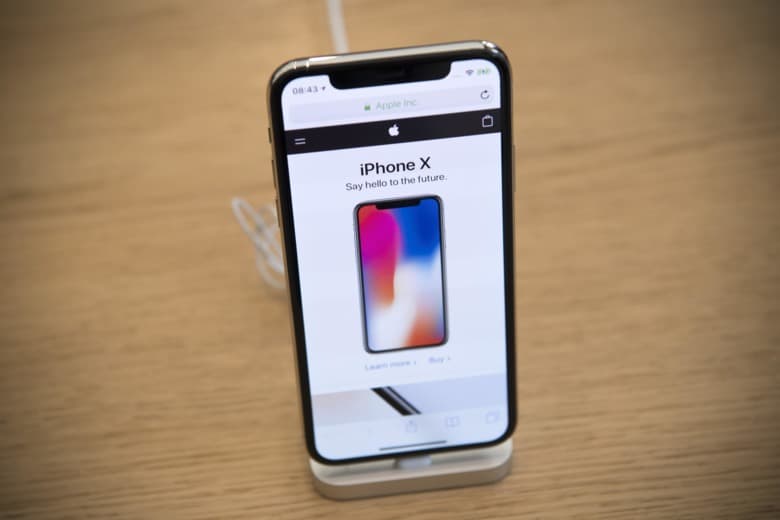
Sometimes imitation is just a baffling form of flattery. Nowhere is that more often the case than with Android and iOS, dueling mobile operating systems that have been “borrowing” features from one another for years. Many of these moves have made sense: The iPhone slowly adopted popular Android phone elements such as wireless charging and edge-to-edge displays, while Google has learned from Apple’s App Store and quick settings menu. But in the next version of its mobile operating system, Google plans to emulate one of the iPhone X’s least favorable features: the notch at the top of the display.
According to a report from Bloomberg, Google is working on an “overhaul” of its Android platform that will include the iPhone X’s signature notch at the top of its displays. For many phone owners and reviewers, that notch was one of their least-liked features: At the polite end of the spectrum, CNN Tech’s Heather Kelly felt that Apple went “a little too far to push its screen to the very edges of the device.” Daring Fireball’s John Gruber, meanwhile, said that the notch offends him, calling it “ungainly and unnatural.” Developers have since created apps that mask the unsightly affectation. Why then, would Google want to cop this iOS feature in the next version of Android?
The reason Google would implement the notch isn’t so much because it’s a popular design element—since it’s not—but rather because of what it enables. Behind that black notch is an infrared sensor and emitter that Apple uses to scan your face. Paired with the phone’s front-facing camera, it can capture infrared images, 2-D images, and 3-D images, thanks to the sensor’s ability to capture the depth and angle of each point of infrared light—30,000 of them, in this case—that hits your face. With this technology Apple gets an exceedingly accurate picture of your unique facial dimensions, which it can use for biometric authentication, for augmented reality, and for fun, silly applications like Animoji.
Already, some Android handsets have opted for notched designs. Bloomberg notes that a handset from Essential, former Android chief Andy Rubin’s company, also features a notched display, while an upcoming Huawei handset will also sport the notch. Not all Android phones will have or need this notch though, even if Google builds it into the next version of the operating system. A patent published in mid-January revealed that Samsung was already exploring ways to include additional Face ID–style sensors at the very top edge of the device. Other hardware manufacturers unable to position the sensors that high up on the display could instead opt for elongating the top bezel to hide it.
The “notch,” while not attractive, does add a tiny bit more real estate at the top of the phone’s screen, though, and by including notch compatibility into its OS, it could mean that Google will build on top of what Apple has done—perhaps Android will use that extra, awkwardly sized space at the top of the screen as a display space for settings or notifications. Phones like the LG V20 have taken a stab at this with a smaller, customizable secondary display at the top of the screen where you can add shortcuts to frequently used apps or phone settings. It turns what might otherwise be an overly large bezel or an ugly notch into a valuable, unique utility. Google could also use the space as a permanent spot for the Android search bar, or a way to easily access Google Assistant. The upcoming OS, dubbed Android P, is said to heavily emphasize Google’s voice-based virtual assistant.
Google reportedly hopes that adding such a notch to its handset—along with an overarching design update—will entice iOS users to switch to the Android side, either because of the features it provides, or because it makes the phones look more iPhone-like. At this point, though, it seems that Google at least, among Android phone-makers, has moved beyond simply trying to make phones that are iPhone copycats. The Google Pixel 2—the company’s latest flagship—is an excellent phone in its own right. As long as Google continues to bolster its seamless integration with Google Services and improve Google Assistant’s capabilities and Google Home compatibility—and Android phone-makers continue to make devices with excellent cameras and battery performance—the platform will draw iOS users looking for a change or frustrated by Apple’s recent fiascos. Adding a notch shouldn’t really be necessary, as long as Android hasn’t been secretly throttling phone performance.